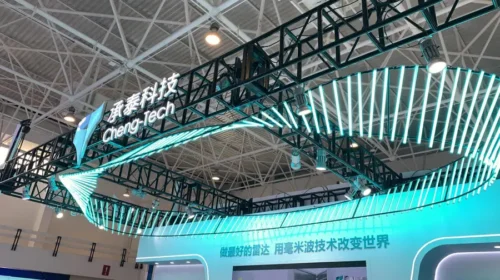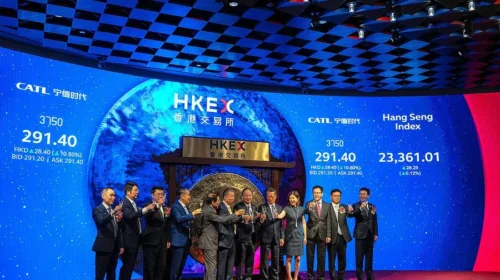GM’s China Charge, and Nvidia’s Antitrust Probe

GM takes a $5 billion charge related to its struggling China business. And China probes Nvidia for antitrust behavior in a 4-year-old chip acquisition
By Doug Young & Rene Vanguestaine
In a world where market dynamics often shift faster than companies can adapt, General Motors (GM) is facing a stark reminder of the complexities involved in navigating China’s volatile landscape. Once hailed as a beacon of growth, GM’s fortunes in China have taken a sharp downturn, exemplified by a recent $2.8 billion non-cash charge related to its joint venture with SAIC, one of China’s largest automakers. This charge highlights a broader crisis at GM, a company that controlled nearly 15% of China’s vast auto market in 2017 but saw its market share tumble to 8.6% by last year.
This decline underscores a crucial business lesson: adaptation is not just about introducing new products; it’s about anticipating and responding to technological shifts swiftly and effectively. GM, despite its early attempts to adopt electric vehicles (EVs), found itself left behind in the race for innovation, especially as China’s domestic EV manufacturers surged ahead. These new players operate with a clear focus on next-generation technology and benefit from less legacy baggage than GM, which is weighed down by its traditional internal combustion engine (ICE) operations.
Despite GM’s earlier attempts to shift toward EVs, its strategy faltered. While GM had begun introducing electrified versions of its gas-powered cars, the market demand for fully electric vehicles grew far more quickly than GM had anticipated. This is a classic case of “missed opportunities,” reminiscent of companies like Nokia and IBM, which failed to recognize how rapidly technological shifts would alter their respective industries. GM simply underestimated the pace of change in China’s automotive sector — a market that has evolved faster than many expected.
In contrast, the Chinese EV market has been largely driven by new, flexible companies that were not encumbered by the need to shift from legacy businesses. These companies, such as Nio, Xpeng, and even tech firms like Xiaomi entering the electric vehicle space, have thrived precisely because they started from scratch in an environment where new technology was embraced and quickly scaled. GM, on the other hand, faced the challenge of transitioning to an EV player. This transition was fraught with difficulties, as GM had to deal with massive structural challenges that newer Chinese companies didn’t face.
As GM looks to the future, it will need to rethink its strategy in China if it hopes to remain relevant. The company cannot afford to exit the market, as China is simply too important, but a major reorientation is required. In our opinion, GM could benefit from scaling down its operations and focusing on a limited range of models, especially those that embrace full electrification. Moreover, GM must reconsider how it approaches customer experience and software integration — areas where Chinese companies have excelled. However, with GM’s immense size and bureaucratic challenges, rapid adaptation may not be feasible. Add to this the company’s struggles with its electrification strategy in the U.S. and its recent retreat from autonomous driving ventures, and it’s clear that GM’s future is uncertain.
Nvidia Under Fire
Beyond the automotive sector, another major player facing turbulent times in China is Nvidia, which has recently been caught in an antitrust probe. Nvidia has become a darling of the tech world over the last two years thanks to its focus on AI chips, which have positioned it at the center of the burgeoning AI revolution. However, the company now faces scrutiny from Chinese regulators over a 2020 acquisition of Mellanox Technologies, an Israeli company. The probe, which has garnered significant attention, appears to be politically motivated, aimed at sending a message rather than addressing legitimate regulatory concerns.
The unusual timing of the probe — disclosed four years after the acquisition — suggests that China’s response to Nvidia’s acquisition is simply an expression of anger. This is all about sending a message, about making an example of the company. With tensions between the U.S. and China escalating over tech issues, including the ongoing dispute over access to advanced microchips, China has made it clear that no foreign company can operate in its market without adhering to its own set of rules.
The Chinese government’s tactic here is typical: it often revisits past deals to find a basis for retaliation when necessary. In this case, it is leveraging its regulatory power to make an example of Nvidia and show its domestic audience that China is not to be trifled with. While the investigation may not result in the dissolution of the merger, it’s likely that Nvidia will face significant fines, as well as a public reprimand.
Looking at the broader implications of China’s actions against Nvidia, it becomes clear that this is part of a wider trend that foreign companies must contend with in the region. While companies like Nvidia are likely to feel the sting of these actions, many will continue to face the challenge of operating in China’s complex and often unpredictable business environment. For companies involved in high-tech industries, particularly those dealing with cutting-edge technology, the risk is especially high. Many companies are “captive” to the Chinese market, unable to simply pull out due to the market’s sheer size and the risks involved in leaving. However, these companies are also at the mercy of Chinese regulations and the shifting political climate, which can make for a precarious business landscape.
Looking ahead, these kinds of geopolitical risks are likely to shape the strategies of multinational companies in the years ahead. Companies will have to think carefully about how they balance the rewards of tapping into China’s enormous market with the potential costs of doing so.
In an increasingly globalized yet fragmented world, companies can no longer afford to treat markets like China, Russia, Indonesia, and others as simply local variations of their home market. Instead, they must craft strategies that are as dynamic and multifaceted as the markets they aim to conquer.
About China Inc
China Inc by Bamboo Works discusses the latest developments on Chinese companies listed in Hong Kong and the United States to drive informed decision-making for investors and others interested in this dynamic group of companies.
Subscribe to China Inc on your favorite app:
To subscribe to Bamboo Works weekly free newsletter, click here








